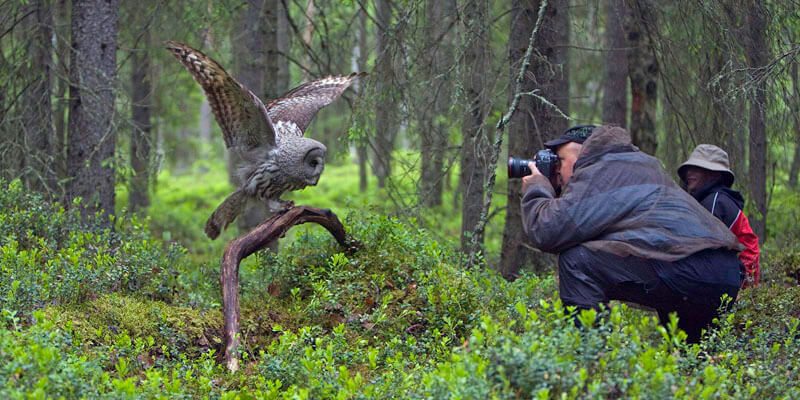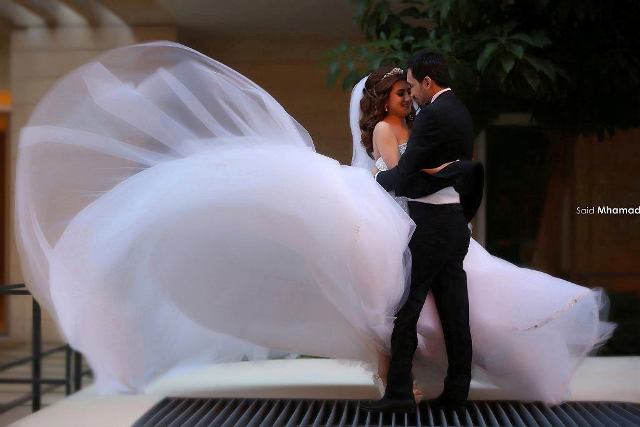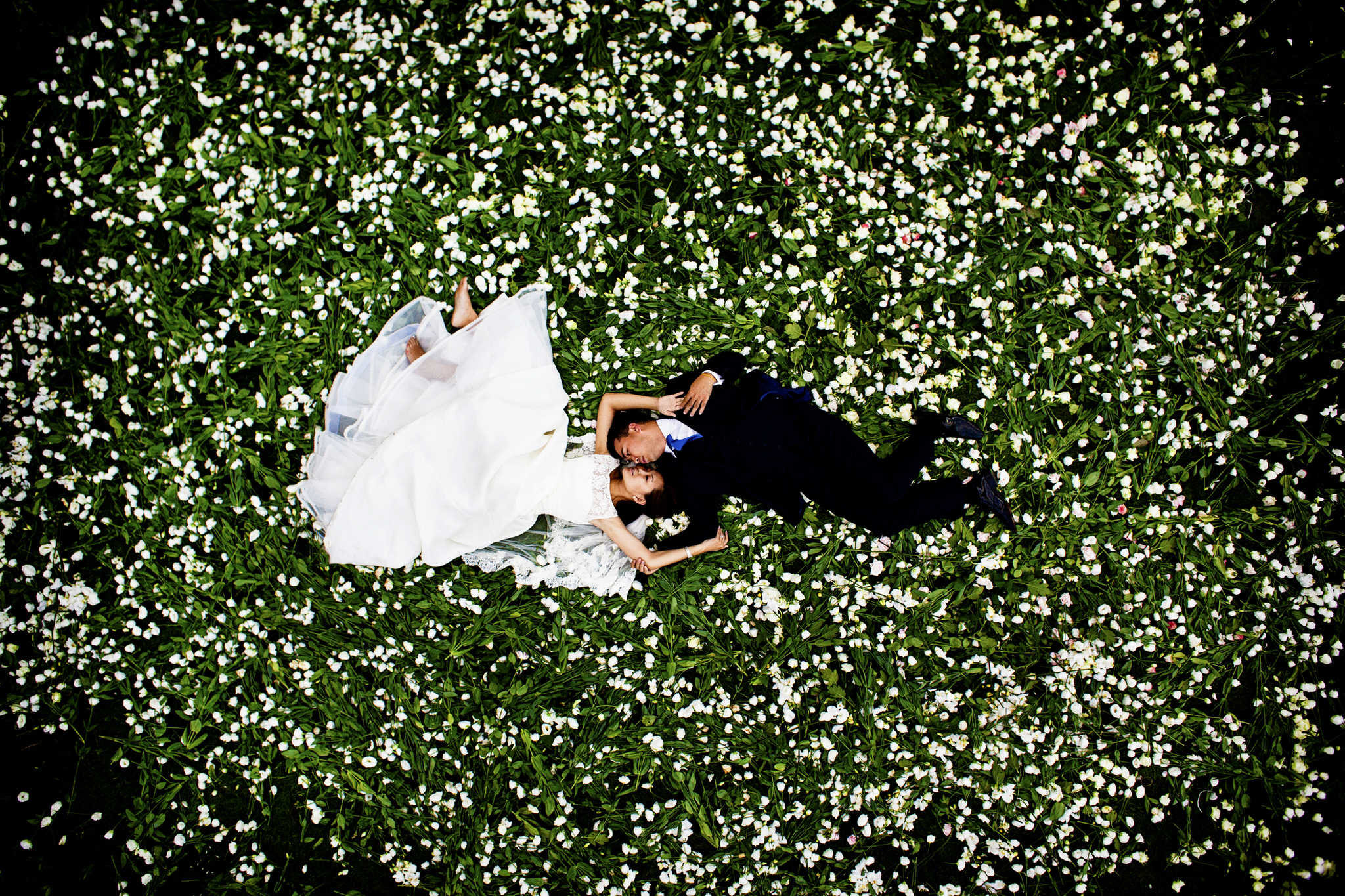
Photography Therapy: The Healing Power of the Image
As a photographer, I’ve always believed in the transformative power of images. There’s something magical about capturing a moment in time, freezing it forever in a photograph. But it wasn’t until recently that I discovered the true therapeutic benefits of photography.
It all began one summer afternoon when I stumbled upon an old photo album hidden away in my grandmother’s attic. As I flipped through the pages, I was transported back in time, reliving memories and experiencing a rush of emotions. Each photograph told a story, capturing not just the image but also the essence of the moment.
Curiosity sparked, I began to delve deeper into the concept of photography therapy. I learned that by using photography as a therapeutic practice, individuals can tap into the healing power of images to explore their emotions, express themselves creatively, and gain insights into their inner world.
Through photography therapy, I discovered a way to channel my emotions and experiences into something tangible and meaningful. Whether it was capturing the beauty of nature or documenting my own journey, each photograph became a reflection of my inner self.
In this article, I invite you to join me on a journey through the world of photography therapy. We will explore the essence of this powerful form of healing, uncover its historical roots, dive into the emotional resonance of images, and explore the science behind the healing effects of photography. We will also provide practical approaches and techniques for implementing photography therapy and discuss the importance of community and group initiatives.
Photography therapy is more than just taking pictures. It is a transformative journey that can lead to emotional well-being, self-discovery, and personal growth. So grab your camera and let’s embark on a therapeutic adventure!
Understanding the Essence of Photography Therapy
In the world of mental health, photography therapy stands out as a unique and powerful approach that harnesses the healing potential of images. By engaging in photography as a form of therapy, individuals can tap into the transformative power of images to explore their emotions, express themselves creatively, and gain valuable insights into their inner world.
Defining Photography as a Form of Healing
Photography therapy, also known as phototherapy, involves using photographs to facilitate personal growth and emotional healing. It recognizes the therapeutic benefits of creating, viewing, and discussing photographs as a means of self-expression and exploration. Through the lens of a camera, individuals can capture moments, emotions, and personal narratives, making them tangible and evocative.
Photography therapy provides a safe and non-verbal form of communication, allowing individuals to express their thoughts, feelings, and experiences that may be difficult to put into words. It serves as a powerful tool for self-reflection, self-discovery, and self-empowerment.
Historical Roots of Photographic Art Therapy
The roots of photographic art therapy can be traced back to the late 19th and early 20th centuries when pioneers like Edward Anthony and Alfred Stieglitz began exploring the therapeutic aspects of photography. Their work laid the foundation for the integration of photography into art therapy and mental health practices.
During the mid-20th century, photographic art therapy gained recognition as a legitimate therapeutic approach, thanks to the pioneering work of psychologists and therapists like Joy Schaverien and Rosy Martin. Their research and practice highlighted the immense potential of photography as a tool for healing emotional wounds, promoting self-exploration, and enhancing mental well-being.
Integrating Photography into Modern Mental Health Practices
Today, photography therapy has been integrated into modern mental health practices, offering individuals an innovative and dynamic approach to healing. Mental health professionals, including psychologists, counselors, and art therapists, recognize the unique benefits that photography brings to the therapeutic process.
The integration of photography into mental health practices allows for a more holistic and person-centered approach to healing. It complements traditional therapeutic techniques by providing an additional avenue for self-expression and exploration. Photography therapy taps into individuals’ creativity and offers a unique means of capturing and processing emotions, fostering insight, and promoting personal growth.
| Benefit | Description |
|---|---|
| Enhanced self-expression | Photography therapy provides individuals with a creative outlet to express their thoughts, emotions, and experiences in a non-verbal medium. |
| Increased self-awareness | Through the process of capturing and reflecting on photographs, individuals gain deeper insights into their inner world, strengths, and areas for growth. |
| Emotional healing | The act of photographing and discussing images can facilitate emotional processing, allowing individuals to navigate and heal from past trauma, loss, or difficult experiences. |
| Improved well-being | Engaging in photography therapy can contribute to improved mental, emotional, and even physical well-being, promoting a sense of fulfillment, satisfaction, and overall life satisfaction. |
The Emotional Resonance of Images
Images have a profound ability to evoke emotions and connect with our innermost experiences. Photography, as an emotional medium, has the power to capture and convey complex emotions that words cannot fully express. The psychological impact of photography therapy is undeniable, as it allows individuals to explore and process their emotions through visual storytelling.
When we look at a photograph, we are transported into the world of the image, experiencing a range of emotions that resonate deep within us. Whether it’s a serene landscape, a candid moment, or a powerful portrait, images have the ability to evoke joy, sadness, wonder, nostalgia, and a myriad of other emotional responses.
Photography therapy harnesses this emotional resonance of images to facilitate healing and personal growth. Through the act of capturing and reflecting on photographs, individuals can gain insights into their emotions, explore their inner world, and find solace in self-expression. It provides a safe and non-verbal outlet for individuals to process and communicate their feelings, transcending language barriers and allowing for a deeper understanding of one’s own emotions.
The psychological impact of photography therapy extends beyond the act of taking pictures. It involves the process of choosing, curating, and reflecting on images, which can foster a sense of empowerment, self-awareness, and emotional well-being. By exploring the symbolism, composition, and narrative of their photographs, individuals can uncover hidden emotions, patterns, and themes within their own lives.
As an emotional medium, photography therapy offers a unique and powerful way to process and heal from emotional trauma, mental health challenges, and everyday stressors. It provides individuals with a creative outlet to express their innermost thoughts and emotions, leading to a deeper understanding of themselves and their experiences.
The emotional resonance of images in photography therapy creates a transformative space for self-reflection, self-discovery, and personal growth. Through the power of visual storytelling, individuals can find solace, healing, and the freedom to explore the complexities of their emotions in a safe and supportive environment.
The Science of Healing through Photography
Photography therapy is not only an art but also a science. By exploring the scientific aspects of healing through photography, we can gain a deeper understanding of the therapeutic benefits it offers. In this section, we will delve into the quantitative outcomes from photo therapy techniques and discuss the neurobiological insights into photography as a form of therapy.
Quantitative Outcomes from Photo Therapy Techniques
Research has shown that photo therapy techniques have significant healing outcomes, with notable improvements in mental health measures and overall well-being. Through the use of carefully curated images, individuals can tap into their emotions, express themselves, and gain insights into their inner world.
Numerous studies have documented the positive effects of photography therapy. In one study, participants who engaged in photo therapy reported reduced levels of anxiety and depression, increased self-esteem, and improved coping skills. Another study found that individuals who incorporated photo therapy into their treatment experienced enhanced self-awareness and a greater sense of empowerment.
Moreover, quantitative measures such as self-report questionnaires and psychological assessments have consistently shown that photo therapy techniques contribute to positive therapeutic outcomes. These techniques can be tailored to address specific emotional challenges, facilitate emotional processing, and foster personal growth.
Neurobiological Insights into Photography as Therapy
Advancements in neuroscience have provided valuable insights into the neurobiological effects of photography therapy. The act of capturing and engaging with images activates various regions of the brain associated with emotion regulation, memory, and self-reflection.
Studies using functional magnetic resonance imaging (fMRI) have demonstrated that viewing meaningful photographs activates the brain’s reward centers and releases neurotransmitters associated with pleasure and positive emotions. This suggests that the emotional resonance of images in photography therapy stimulates the brain’s reward system, leading to feelings of well-being and emotional healing.
Furthermore, the act of taking photos and reflecting on them can promote neural plasticity and strengthen neural connections associated with emotional processing and self-awareness. This process can enhance adaptive responses to stress and contribute to the overall therapeutic effects of photography.
| Quantitative Outcomes from Photo Therapy Techniques | Neurobiological Insights into Photography as Therapy |
|---|---|
| – Improved mental health measures | – Activation of brain’s reward centers |
| – Enhanced overall well-being | – Release of neurotransmitters associated with positive emotions |
| – Reduced levels of anxiety and depression | – Strengthening of neural connections associated with emotional processing |
| – Increased self-esteem | – Promoting neural plasticity |
| – Improved coping skills | – Increased self-awareness and self-reflection |
Capturing Self-Discovery: Cameras as Mirrors to the Soul
In the realm of self-discovery, photography holds a unique position. It allows individuals to capture and explore their inner world, unveiling hidden aspects of the self and facilitating a transformative journey of self-reflection. Cameras act as mirrors to the soul, reflecting our emotions, thoughts, and experiences through the images we capture.
When we engage in photography as a tool for self-reflection, we embark on a journey of deep exploration. Through the lens, we gain insights into our own perspectives, values, and desires. Each photograph becomes a visual representation of a moment, capturing not only what is externally visible but also the emotions and thoughts that lie beneath the surface.
The process of self-discovery through photography is multi-faceted. As we focus on composing an image, we become attuned to the details of our surroundings and develop a heightened sense of awareness. The act of framing a shot can be a form of mindfulness, drawing our attention to the present moment and fostering a deeper connection with ourselves.
Moreover, photography allows us to externalize our internal experiences. By capturing our emotions, we can observe them from a different perspective, gaining a fresh insight and understanding. The images we create become a visual narrative of our inner world, portraying the complexities of our emotions and providing a platform for self-expression.
Through the self-reflective process of photography, we can tap into our true selves and explore the depths of our being. We can delve into our passions, fears, and aspirations, embracing our vulnerabilities and celebrating our strengths. Ultimately, photography becomes a powerful tool for self-discovery and personal growth.
Practical Approaches to Therapeutic Photography
Incorporating photography into therapy can be a transformative and empowering experience. In this section, I will provide practical approaches and techniques for getting started with photography therapy, as well as share inspiring success stories that highlight the power of this therapeutic modality.
Tips for Getting Started with Photography Therapy
Interested in exploring photography therapy? Here are some tips to help you get started on your journey:
- Define your goals: Reflect on what you hope to achieve through photography therapy. Are you looking to enhance self-expression, manage stress, or explore your emotions? Understanding your objectives will guide your photography practice.
- Select your equipment: Whether you choose a professional camera, a smartphone, or a disposable camera, the key is to use a device that feels comfortable to you. The focus should be on the process and not on the equipment itself.
- Find inspiration: Explore different styles of photography and follow photographers who resonate with you. Look for images that evoke emotions or tell stories. Let these visuals inspire and guide your own photographic exploration.
- Carve out dedicated time: Set aside regular time for your photography therapy practice. Treat it as you would any other therapeutic endeavor, making it a priority in your schedule.
- Experiment with different subjects and techniques: Explore various subjects, such as nature, portraits, or abstracts. Play with different lighting conditions, perspectives, and camera settings to unlock new possibilities for self-expression.
- Engage in self-reflection: After a photography session, take time to reflect on the emotions and thoughts that arise from your images. Journaling or discussing your photographs with a therapy professional can deepen your understanding of yourself and enhance the therapeutic process.
- Join a photography therapy group: Consider joining a photography therapy group or seeking out a therapist who incorporates photography into their practice. Connecting with others who share your passion for photography and healing can provide a supportive and enriching community.
Remember, there is no right or wrong way to engage in photography therapy. It is a personal and introspective journey that allows you to explore your emotions and experiences through the lens of a camera.
Case Studies: Success Stories in Therapeutic Photography
Now, let’s delve into some inspiring success stories that showcase the transformative power of photography therapy:
Case Study 1: Jane’s Journey to Self-Acceptance
Jane, a survivor of childhood trauma, struggled with feelings of low self-worth and a lack of self-acceptance. Through photography therapy, she was able to externalize her emotions and gain a new perspective on her experiences. By capturing images that represented her journey and growth, Jane began to embrace her uniqueness, fostering a sense of self-compassion and empowerment.
Case Study 2: Mark’s Exploration of Identity
Mark, a young adult navigating his identity as a member of the LGBTQ+ community, used photography therapy as a tool for self-expression and self-discovery. Through capturing images that represented his authentic self, Mark gained a deeper understanding of his identity and found a sense of belonging. The visual storytelling aspect of photography therapy allowed Mark to share his experiences with others in a powerful and meaningful way.
Case Study 3: Sarah’s Healing from Loss
Sarah, grieving the loss of a loved one, found solace and healing through photography therapy. By capturing images that evoked memories and emotions associated with her loss, Sarah was able to process her grief and find moments of peace and beauty amidst the pain. Photography served as a medium of connection and a tool for healing during this challenging time in her life.
These case studies emphasize the power of photography therapy to facilitate self-exploration, healing, and personal growth. Through creative expression and the visual storytelling process, individuals like Jane, Mark, and Sarah were able to embark on transformative journeys of self-discovery, self-acceptance, and emotional healing.
In the next section, we will explore different phototherapy techniques for promoting emotional well-being and delve into their therapeutic benefits.
Exploring Phototherapy Techniques for Emotional Well-being
Phototherapy techniques provide unique paths to promote emotional well-being through the art of photography. By harnessing the creative power of images, individuals can embark on a transformative journey of self-discovery and healing. In this section, we will explore various phototherapy techniques and their therapeutic benefits, enabling individuals to navigate specific emotional challenges, promote self-expression, and foster personal growth.
One powerful phototherapy technique is the creation of a visual narrative. By telling a story through a series of photographs, individuals can gain profound insights into their emotions and experiences. This technique allows for self-reflection and a deeper understanding of one’s inner world.
Another technique is self-portraiture, which involves capturing one’s own image to explore self-identity and emotions. Through self-portraits, individuals can delve into their thoughts, feelings, and aspirations, creating a powerful form of self-expression.
Still life photography is yet another technique that can be employed in phototherapy. By arranging and photographing objects that hold personal significance, individuals can externalize and process their emotions in a symbolic and visual manner.
Photographic collages also offer therapeutic benefits by allowing individuals to combine multiple images into a cohesive whole. Collages can represent different aspects of one’s life or emotions, providing a tangible representation of one’s inner world.
Furthermore, the use of symbolism in photography therapy can be a powerful technique to explore and communicate emotions. By incorporating symbolic elements into photographs, individuals can tap into the deeper layers of their psyche and gain a deeper understanding of their experiences.
Lastly, mindfulness-based photography techniques can promote emotional well-being and presence in the moment. By cultivating a mindful approach to photography, individuals can immerse themselves in the present moment, appreciating the beauty around them and fostering a sense of calm and serenity.
These phototherapy techniques have shown promising results in promoting emotional well-being, self-discovery, and personal growth. By incorporating these techniques into therapy sessions or personal photographic projects, individuals can harness the power of images to facilitate healing and transform their lives.
Mindfulness in Every Snapshot: A Path to Inner Peace
Mindfulness is a powerful practice that can bring us into the present moment and cultivate inner peace. When combined with photography therapy, it becomes a transformative tool for self-awareness and emotional healing. Each snapshot we take becomes an opportunity to engage with the present moment, to observe, and to connect with our surroundings.
By being fully present and mindful while capturing images, we can heighten our senses and develop a deeper connection with ourselves and the world around us. Photography allows us to slow down and pay attention to the details that often go unnoticed. It encourages us to explore our environment with curiosity and to frame moments that evoke meaning and beauty.
Mindful photography is about being fully in tune with our senses and the present moment. It involves observing the interplay of light, capturing the nuances of colors, and noticing the subtle textures and patterns that surround us. It is about finding stillness within ourselves and using the camera as a tool for self-expression and reflection.
Through mindfulness in photography therapy, we can cultivate a deeper understanding of our emotions and thoughts. We can capture moments that evoke joy, sadness, or contemplation, and through the process, gain insights into our inner world. Photography becomes a practice of self-reflection and exploration, allowing us to express our truth and find healing through creative expression.
Using photography as a mindfulness practice opens up possibilities for growth and transformation. It encourages us to let go of judgment and expectations, and instead, embrace the present moment with curiosity and acceptance. With each snapshot, we invite ourselves to be fully present, to slow down, and to connect with our authentic selves.
Incorporating mindfulness into photography therapy enhances its therapeutic benefits. It deepens the connection between body and mind, fosters self-awareness, and promotes emotional well-being. By being mindful in every snapshot, we cultivate inner peace and empower ourselves to navigate life with greater clarity and insight.
Joining Forces: Community and Group Initiatives in Photography Therapy
In photography therapy, the power of community and group initiatives cannot be overstated. Joining forces with others in a supportive and collaborative environment can greatly enhance the healing journey through shared experiences, knowledge, and connection.
Workshops, Retreats, and Online Courses in Photography Therapy
One of the most impactful ways to engage in photography therapy within a community is by participating in workshops, retreats, and online courses. These opportunities provide a structured and guided environment where individuals can explore their emotions, express themselves through imagery, and learn from experienced practitioners.
Workshops offer hands-on experiences, allowing participants to learn new techniques, receive feedback on their work, and engage in discussions with like-minded individuals. Retreats provide a nurturing space for self-reflection and creative expression, often in serene and inspiring natural settings. Online courses offer flexibility and accessibility, allowing individuals to learn at their own pace and connect with a global community of peers.
Building Support Networks Through Shared Imagery
Shared imagery plays a vital role in building support networks within the photography therapy community. By sharing their photographs and personal experiences, individuals can connect, empathize, and find solace in the understanding and support of others.
Through the exchange of visual stories, participants in group initiatives can form bonds, cultivate empathy, and gain perspectives from diverse backgrounds. This shared imagery fosters a sense of belonging, encourages active listening, and promotes open and honest communication.
Additionally, building support networks through shared imagery allows for ongoing support and encouragement even outside of formal sessions. People can connect through online platforms, social media groups, or local photography clubs, creating a supportive community that extends beyond the boundaries of time and space.
| Benefits of Community and Group Initiatives in Photography Therapy: |
|---|
| Enhanced learning: Collaborative environments provide opportunities to learn from each other’s perspectives, techniques, and insights, fostering personal and artistic growth. |
| Validation and empathy: Sharing experiences and images with others creates a sense of validation and understanding, promoting emotional healing and self-acceptance. |
| Accountability and motivation: Engaging in photography therapy within a community offers accountability and motivation to continue the healing journey, even during challenging times. |
| Expanded creativity: Interacting with a diverse group of individuals can broaden perspectives, inspire new ideas, and encourage experimentation with different photographic styles and approaches. |
| Connection and support: Building connections and support networks through shared imagery creates a sense of belonging and provides a safe space for vulnerability, compassion, and growth. |
Creative Expression: A Lens for Emotional Healing
Creative expression lies at the core of photography therapy, allowing individuals to harness the power of images to heal emotionally. Through the medium of photography, individuals can delve into their innermost thoughts and feelings, capturing moments that convey their unique experiences.
Photography serves as a transformative tool for emotional healing, offering therapeutic benefits through creative expression. By using photography as a means of self-expression, individuals can convey their emotions, thoughts, and experiences in a visual language.
The process of creating photographic imagery allows for exploration, reflection, and release of emotions that may be difficult to express verbally. Through the act of capturing and composing images, individuals can tap into their inner creativity, finding new ways to express and understand themselves.
Photography therapy encourages individuals to explore alternative forms of communication, using pictures as a medium for emotional expression. By engaging with the visual language of photography, individuals can unlock new perspectives, insights, and avenues for healing.
Special Focus: Photography Therapy in Diverse Populations
Photography therapy is a versatile approach that can be adapted to cater to the unique needs of diverse populations. In this section, I will explore the application of photography therapy in different cultural contexts and emphasize the importance of inclusive approaches in therapeutic practices.
Cultural considerations play a significant role in therapy, as diverse communities may have distinct perspectives, values, and sensitivities. By recognizing and respecting these differences, we can create a safe and inclusive space where individuals from various backgrounds feel seen, heard, and understood.
One of the benefits of photography therapy is its ability to transcend language and cultural barriers. Images have the power to communicate complex emotions and experiences, making photography therapy an accessible approach for individuals who may face language or communication challenges.
Inclusive photography therapy approaches involve actively engaging with individuals from diverse populations, understanding their unique experiences, and adapting therapeutic techniques accordingly. By incorporating cultural elements and practices into therapy, we can provide a more personalized and meaningful experience for clients.
Photography therapy in diverse populations can also promote cultural appreciation and self-expression. By encouraging individuals to explore their cultural heritage and express themselves through photography, we create opportunities for personal growth, self-discovery, and identity development.
Furthermore, inclusive photography therapy approaches foster a sense of belonging and validation, helping individuals from diverse backgrounds feel accepted and valued. By creating a supportive and inclusive environment, we empower clients to embrace their cultural identities and use photography as a tool for healing and self-exploration.
In conclusion, photography therapy has immense potential in serving diverse populations. By applying cultural considerations and embracing inclusive approaches, we can harness the healing power of images to promote emotional well-being, cultural appreciation, and self-expression in individuals from all walks of life.
Conclusion
Reflecting on the transformative journey of photography therapy, I am truly inspired by the profound impact it has on individuals’ emotional well-being and self-discovery. Through the power of images, this therapeutic practice has allowed countless individuals to explore their emotions, express themselves creatively, and gain deep insights into their inner world.
As we look towards the future of phototherapy, there are immense possibilities for further development and expansion. The growing movement of photography therapy has already made significant strides in the field of mental health, and there is much more to explore. With ongoing research and innovation, we can continue to harness the healing power of images to benefit a wider range of individuals and communities.
Next Steps in the Phototherapy Movement
To further advance the field of photography therapy, it is essential to foster collaboration among professionals, researchers, and practitioners. By actively sharing knowledge and experiences, we can refine therapeutic approaches, develop evidence-based practices, and establish ethical guidelines that ensure the highest standards of care.
Additionally, accessibility and inclusivity should be key considerations as we move forward. It is crucial to make photography therapy accessible to diverse populations, tailoring interventions to address cultural, social, and individual needs. By embracing an inclusive approach, we can create safe and supportive spaces for everyone to engage in the transformative journey of photography therapy.
In conclusion, the transformative journey of photography therapy holds immense promise for individuals seeking emotional healing and self-discovery. With a focus on collaboration, accessibility, and inclusivity, the future of phototherapy looks bright. Together, we can continue to unlock the power of images to nurture the human spirit and promote emotional well-being.
FAQ
What is photography therapy?
Photography therapy is a form of healing that utilizes images to promote emotional well-being and self-discovery. It involves using photography as a therapeutic practice to explore and express emotions, fostering creative expression and gaining insights into one’s inner world.
How does photography therapy fit into modern mental health practices?
Photography therapy is increasingly integrated into modern mental health practices as a complementary approach to traditional therapy. It offers a unique way to explore emotions, express oneself creatively, and promote self-discovery, leading to enhanced emotional well-being and overall mental health.
What are the historical roots of photographic art therapy?
The use of photography for healing purposes can be traced back to the late 19th century. It evolved alongside the development of art therapy and gained recognition as a powerful tool for self-expression and emotional healing. Today, it continues to be an important component of therapeutic practices.
How do images resonate emotionally and serve as an emotional medium in photography therapy?
Images have a profound ability to evoke emotions and connect with our innermost experiences. In photography therapy, images act as a visual language, providing a means of communication and self-expression for individuals to explore, process, and navigate through their emotions.
What psychological impact does photography therapy have?
Photography therapy has been shown to have a positive psychological impact by facilitating the processing of emotions, increasing self-awareness, and promoting personal growth. It can help individuals gain insights, develop coping strategies, and enhance overall emotional well-being.
What are the scientific aspects of healing through photography?
Scientific research has demonstrated the therapeutic benefits of photography therapy. Studies have shown improvements in mental health measures and overall well-being as a result of engaging in photo therapy techniques. Additionally, neurobiological insights have revealed the positive effects of photography on the brain and the body’s stress response.
How can photography facilitate self-discovery?
Cameras can serve as powerful tools for self-reflection and self-discovery. Through photography, individuals can capture moments that resonate with their inner world, revealing hidden aspects of themselves and fostering a deeper understanding of their emotions, thoughts, and experiences.
How can I get started with photography therapy?
To get started with photography therapy, you can begin by exploring the topics and themes that resonate with you personally. Experiment with different photographic techniques, such as self-portraits or capturing nature, and reflect on the emotions and insights they evoke. Seeking guidance from a professional therapist or joining a photography therapy group can also be beneficial.
Can you provide examples of success stories in photography therapy?
There have been numerous success stories in photography therapy, where individuals have experienced transformative healing and personal growth. For example, individuals struggling with anxiety or depression have found solace and self-expression through the art of photography, leading to improved mental health and a renewed sense of purpose.
What are some phototherapy techniques for emotional well-being?
There are various phototherapy techniques that can promote emotional well-being. These include photo journaling, self-portraiture, thematic photography projects, and collage making. Each technique offers unique ways to explore emotions, express oneself creatively, and enhance overall emotional wellness.
How can mindfulness be integrated into photography therapy?
Mindfulness can be integrated into every step of the photography process, from the act of capturing images to the mindful observation of them. By cultivating a present-moment awareness and a non-judgmental attitude, individuals can enhance their connection with the subject matter, resulting in a more profound and meaningful photographic experience.
How do community initiatives play a role in photography therapy?
Community initiatives, such as workshops, retreats, and online courses, provide opportunities for individuals to engage in photography therapy within a supportive community. These initiatives offer a space for participants to share their experiences, learn from one another, and build a support network that fosters personal growth and healing.
How does creative expression contribute to emotional healing in photography therapy?
Creative expression is at the heart of photography therapy. By using photography as a medium for self-expression, individuals can tap into their creativity, explore their emotions, and find new ways of processing and healing. The act of creating and sharing meaningful images can bring about a sense of empowerment and emotional well-being.
Are there special considerations for photography therapy with diverse populations?
Yes, when working with diverse populations, it is important to consider cultural factors, values, and beliefs. Inclusive approaches to photography therapy should be implemented to ensure that individuals from different cultural backgrounds feel respected, understood, and empowered throughout their therapeutic journey.





















